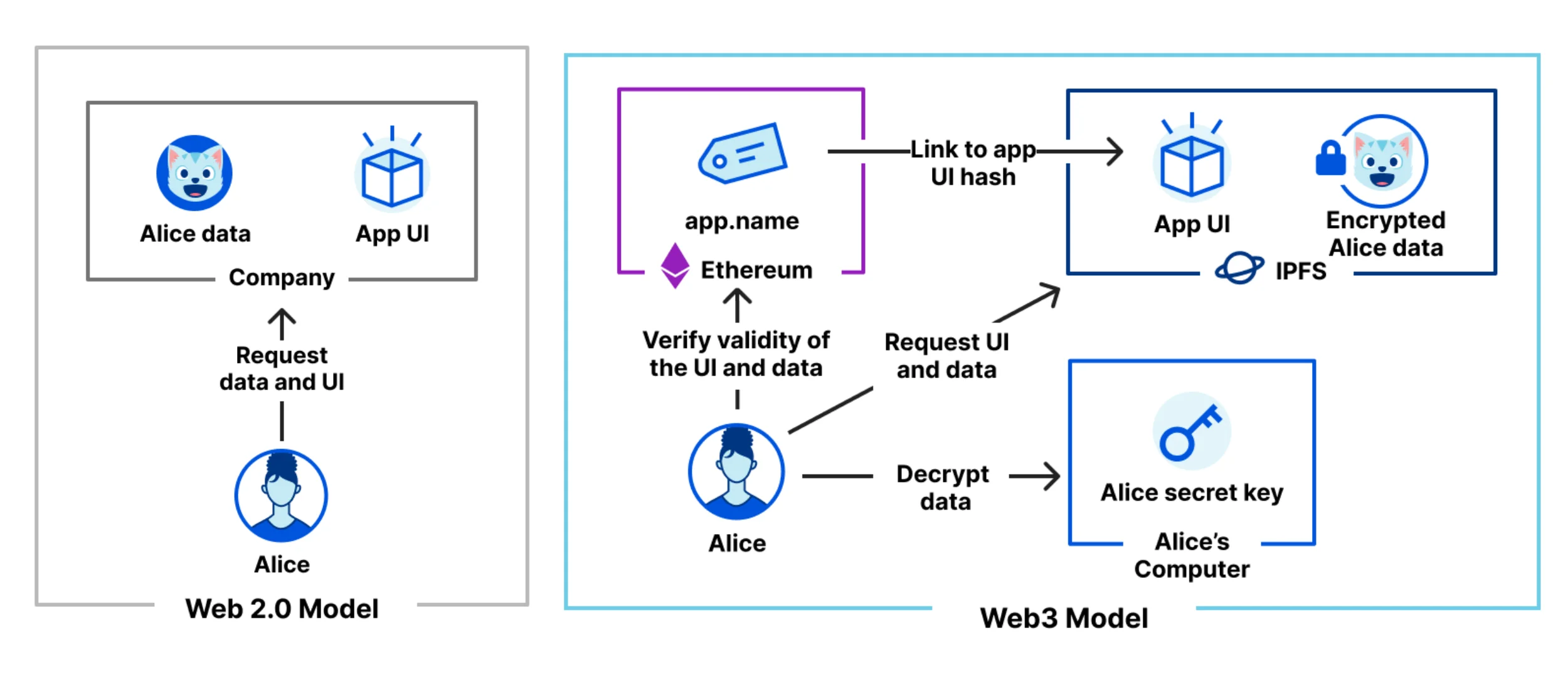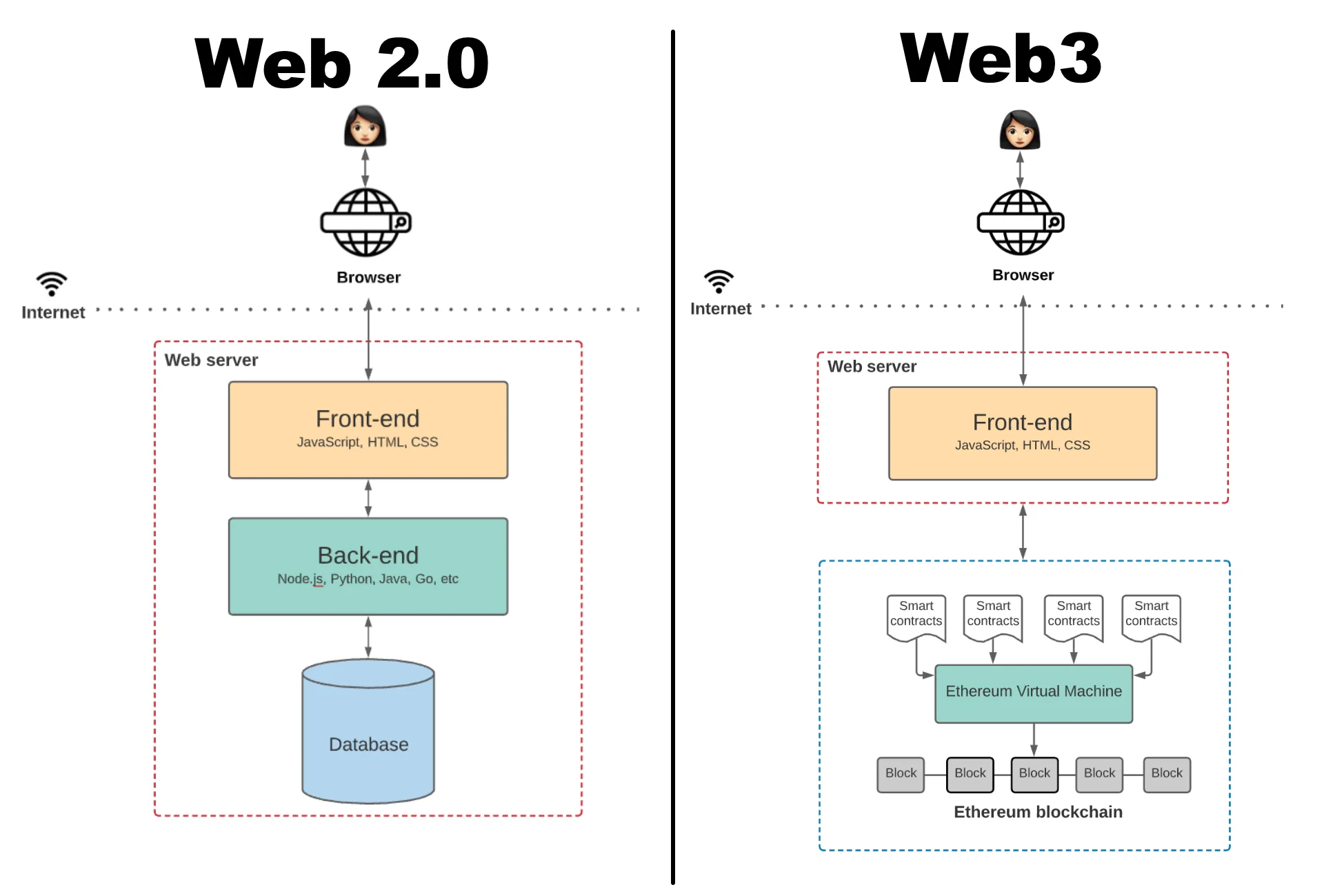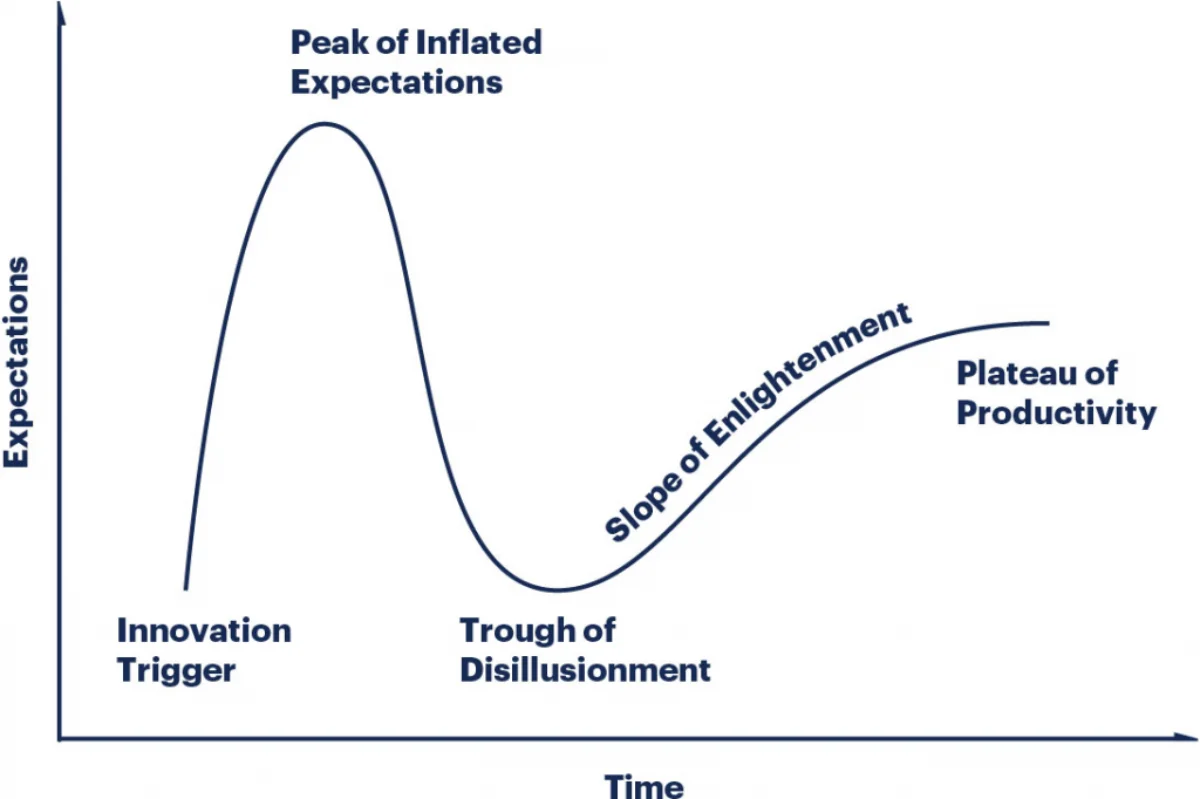There’s a new movement that is going around on social media and tech websites. It is on everyone’s lips but there’s no clear indication of what it is. It is called web3. The term web3 has been thrown around for some time but there is no clear indication of what it actually is. So, what is web3? How do we access this web3? What does it mean for the future of the internet? We answer the question and explain all that to you.
What is Web3
To coin Web3, is to imply that there was a web1 and web2. So we take a look back at history and see how we arrived at web3.
In the early days of the internet, almost every web page address started with the subdomain ‘www’ or world wide web. But in reality, it’s more like the wild wild web. In those days, it was considered web 1.0 where you put a web page on a web server and people would come to your website getting information. Essentially, the early days of the web site was a huge library of getting information.
If web 1.0 was the read-only version of the internet, the web 2.0 is the read-write version of the internet. These are the days where forms are added to the website and you can comment on things. From this,enterprising people turn the web into a platform and we have web apps like FaceBook, Twitter and other social media platforms. Even more enterprising people selling things on the internet and Amazon and the likes are born. Today, those internet companies are worth trillions of dollars and basically help shape the modern world. Their world today would be unrecognizable without those companies shaping the future.
Now, comes web3. Not to be confused with Web 3.0 which is a term that is being coined by the inventor of the web, Tim Lee-Bernes. In Web 3.0, the goal is to create a machine readable version of the web so instead of everything if wrapped in a series of <div> boxes, you have something more semantic and make sense like <address>, <nav>, <article> and <section>.

The idea of web3 is to create a truly decentralized internet where data, the new black gold, is not concentrated by a group of entities. According to web3 evangelist, the current state of web or Web 2.0 is where the entire internet has been organized and controlled by a few Silicon Valley internet companies. The argument has merit since most of the web traffic went to FAANG (Facebook, Apple, Amazon, Netflix and Google) companies. So with technology that is derived from cryptocurrency and block chain, the idea is that you can have a decentralized network of servers that serve you the data and allows you to conduct transactions securely.
Web3 and Block Chain
Concepts

One of the main differences of the supporters of web3 claims is that the entire app is decentralized. CloudFlare has another good diagram of what a web3 would look like.
Traditionally, when you visit a webapp like Facebook on your browser, you load everything from Facebook’s server. In web3, the data, the user interface and the app logic are located in different parts. And the data that you own is encrypted and can only be open by you.
How to web3

First, how do you get data from a web3 website, or browse a web3 website? First, you need the right tools. It’s either you download a browser that supports web3 protocols like Brave or use a web extension like MetaMask to see through the pages. Once you have installed the browser or extension, you can go to sites like enosis-auction.eth where they show stuff that is being auctioned on the block chain. Notice that the domain name ends with .eth, which is a shorthand for ethereum, one of the cryptocurrency that is backing web3. Once you get to the rich block chain, you basically view the site like any other website that you visited.
Any attempts to view the website without the proper tools will make the browser report that the server is not found. The main reason is these web3 websites are registered on a different name service that is totally different from the traditional name service that we always use. If you use the tool, it will query the domain name into its own service, in this case, called the ethereum name service.
So you got the basics, how do you say you wanted to build a dapp (decentralized app) based on a blockchain technology like ethereum. Cloudflare has a good overview of how to build such an app. Furthermore, CloudFare is one of the proponents of web3 which supports the CloudFlare Web3 Gateway which helps translate one protocol (https) to another (blockchain).
What it means for you
So now we have an idea of what web3 really is, how does this impact you and is this the future of the internet like the web3 proponents claimed?
For
For starters, let’s see what kind of problem that web3 is trying to solve. Firstly, the web3 supporters claimed that the internet is too concentrated by a few power brokers. There is no doubt that you have a problem of concentrated power if the top six tech companies have a value of half of the top 100 companies in NASDAQ. One of the reasons for the power is the amount of data that the companies collect. Some say, data is the new black gold.
Web3 proponents are hoping that this new technology will release the stranglehold the powerful tech companies have over everyone else. With the data, the app code is separated, they hope that this internet is more decentralized like they are meant to be.
Against
Now we have heard from the proponents side, how about from the detractors side. One of the famous detractors to the web3 initiative is Mr Jack Dorsey, the founder of Twitter. He claims that web3 right now is all just marketing haloppa and in the end, the Venture Capitalist and other start-ups that push such tech ends up owning everything about web3, code and data included.
Such a strong statement from the Founder and ex-CEO of Twitter does bring some pushback from the web3 community. Marc Andreessen, a prominent web3 backer, has blocked Jack Dorsey for such comments.
Kevin Werbach, Professor of Business Studies and Legal Ethics mentions that web3 currently is hyped without any real utility. Whatever that the web3 promises, it is being done now.
Web3 is, to some extent, a meme or marketing brand around a variety of blockchain and cryptocurrency activity, which was already happening. Like the enterprise blockchain wave of a few years ago, web3 is being hyped as much farther along in adoption than it truly is. Lots of people are trading crypto and buying NFTs, but that doesn’t necessarily mean they are adopting distributed alternatives to major tech platforms - Kevin Werbach, Professor of Legal Studies and Business Ethics at Wharton.
Only time will tell that both prominent experts’ predictions come to pass. However, both arguments do have their merits.
Conclusion

So what is the prognosis of the current state of web3? At this moment, that is late 2021 to early 2022, there is a lot of hype surrounding web3 movement. While there are claims of web3 chat app, email service and others, it has not gone mainstream at the moment. In the Gartner Hype Cycle Graph, web3 is currently climbing the first mountain. So at this moment, web3 will either go up to the mountain of hype or tumble down into the graveyard of forgotten technologies.
